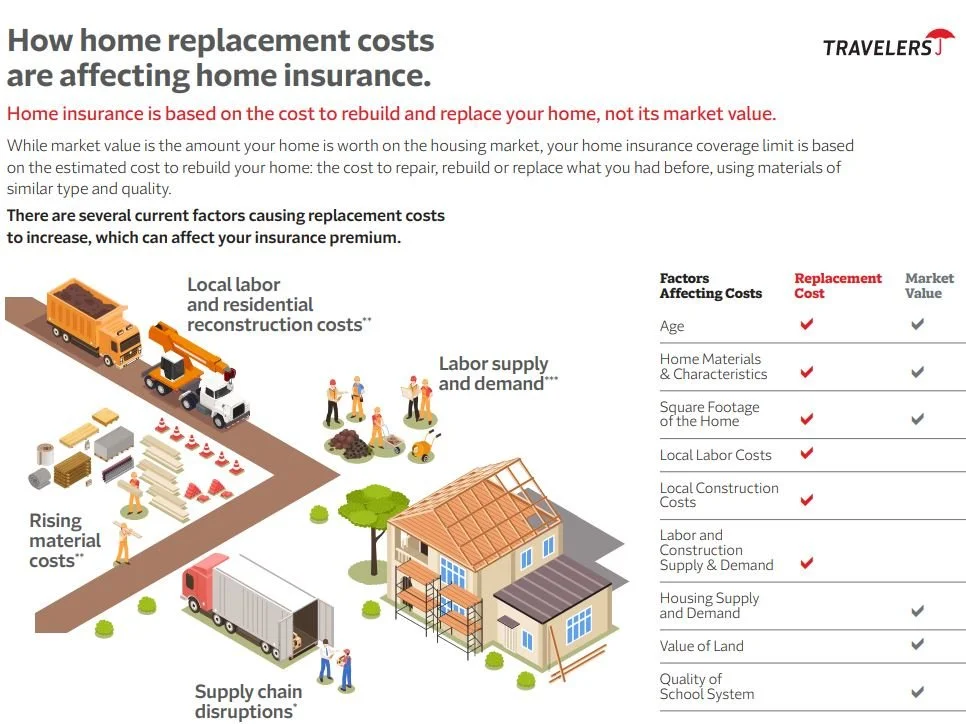Replacement Cost (RC) VS Actual Cash Value (ACV) : Opting for the Best Settlement Strategy
When it comes to settling insurance claims here in Chattanooga, you’ve got two choices: Replacement Cost (RC) and Actual Cash Value (ACV). These options affect how much you’ll get if you file a claim after a loss. So, what’s the difference? It comes down to depreciation. In property insurance, depreciation is the decrease in value based on how much life is left in the damaged property. An adjuster calculates this by considering factors like the property’s age and normal wear and tear.
Replacement Cost (RC)
With Replacement Cost coverage, your claims are settled with reimbursable depreciation, meaning you can recoup some or all of the depreciation after repairs are completed. RC policies typically require you to insure your property at a higher valuation per square foot, but they provide greater financial protection in the long run.
Example: If a kitchen fire at your property causes $30,000 in damage, and your deductible is $3,000, the insurance company will pay up to $27,000. The adjuster will then evaluate how much useful life remains in the damaged items, determining an Actual Cash Value (ACV) of $15,000. You will initially receive $12,000 (ACV minus your deductible). If repairs total $20,000, you can submit receipts for the work, and a second check will be issued to reimburse the depreciation, in this case, $5,000. The only cost that is not recoverable is your deductible.
Replacement Cost allows you to get more value for your claim, helping you recover closer to the full cost of repairs.
Actual Cash Value (ACV)
On the other hand, an Actual Cash Value policy pays only the depreciated cost to repair or replace your damaged property. ACV reflects the current worth of the property at the time of the loss, not the original value. This method is typically 20-25% cheaper than Replacement Cost coverage and allows you to insure your property at a lower value per square foot, but you cannot recover any depreciation under an ACV policy.
Example: Using the same $30,000 kitchen fire scenario, an ACV policy with a $3,000 deductible would issue a payment of $12,000 (ACV minus the deductible). In this case, you would not receive any additional reimbursement for depreciation, meaning $12,000 is all you would recover.
One thing to keep in mind is that you can choose to spend the payout from an ACV policy however you’d like. Whether you decide to fix the damage, sell the property "as is," or use the money elsewhere, it’s up to you.
A Note on Depreciation
Depreciation can be difficult to calculate until a loss occurs, and it is based on the last time the property was updated, not the year it was originally built. While everything depreciates at different rates, a general rule of thumb is about 1% per year. Certain parts of a property, such as the roof, tend to depreciate faster due to exposure to weather.
When evaluating your property insurance, it’s important to think about what you would do in the event of a total loss. Would you rebuild the property from the ground up, or would you prefer to clean up the land, sell it, and move on to a new opportunity?
If rebuilding isn't part of your plan, you may want to reconsider carrying Replacement Cost (RC) coverage. Paying for RC coverage could mean you’re spending more on premiums than you would ever recover from a claim. Remember, RC coverage requires you to make the necessary repairs in order to recoup depreciation, which may not make sense if you don’t intend to rebuild.
Why Focus on Total Loss?
You might wonder why we emphasize total loss instead of partial loss when discussing coverage options. There are a couple of reasons for this:
Lower Repair Costs: In the case of a partial loss, you or someone you know may be able to make the repairs for significantly less than what your insurance company estimates.
Investor Trends: We've observed that around 60-65% of our investors with Replacement Cost coverage who experience a partial loss never return to the insurance company to claim the depreciation. This isn’t because they don’t want to, but because the initial payout is often enough to cover the necessary repairs, leaving them satisfied without further claims.
Lender Requirements
If you have a loan on your property, your lender will likely have specific insurance requirements you need to meet, including the potential need for Replacement Cost coverage. Lenders typically require this to protect their investment in the property, so it’s important to check your loan terms and ensure your policy aligns with these requirements.
If you have any questions or would like more information on which settlement method is best for your needs, feel free to reach out to our office today at 423.541.1111 to learn more.







